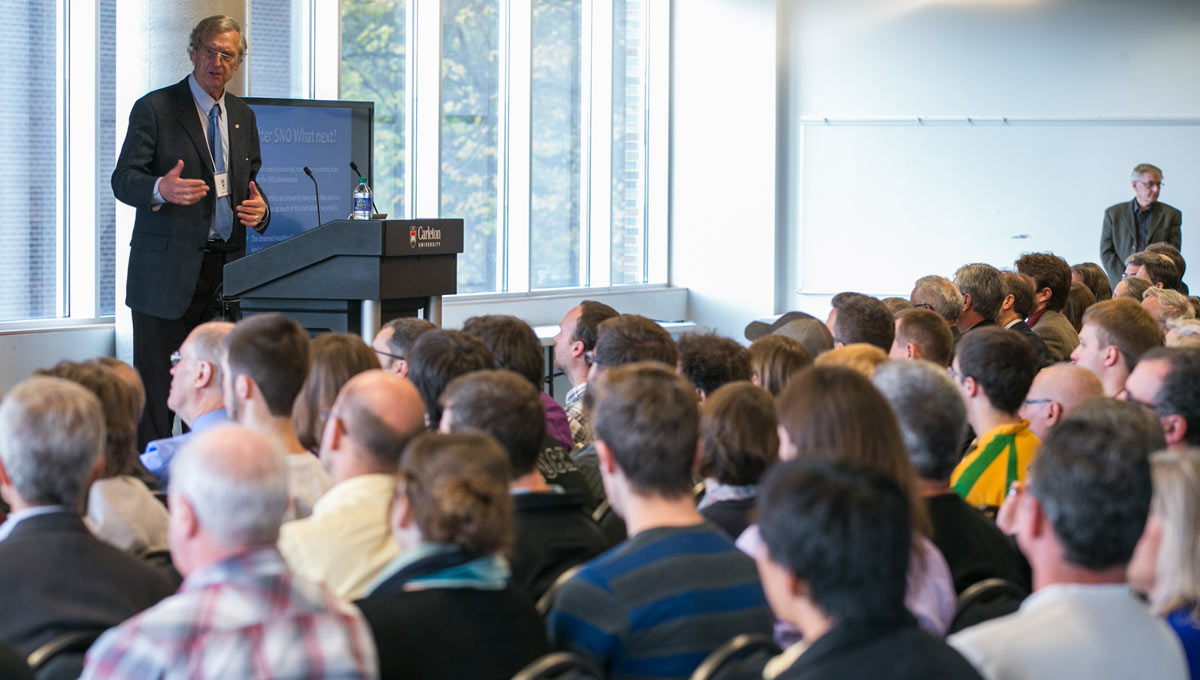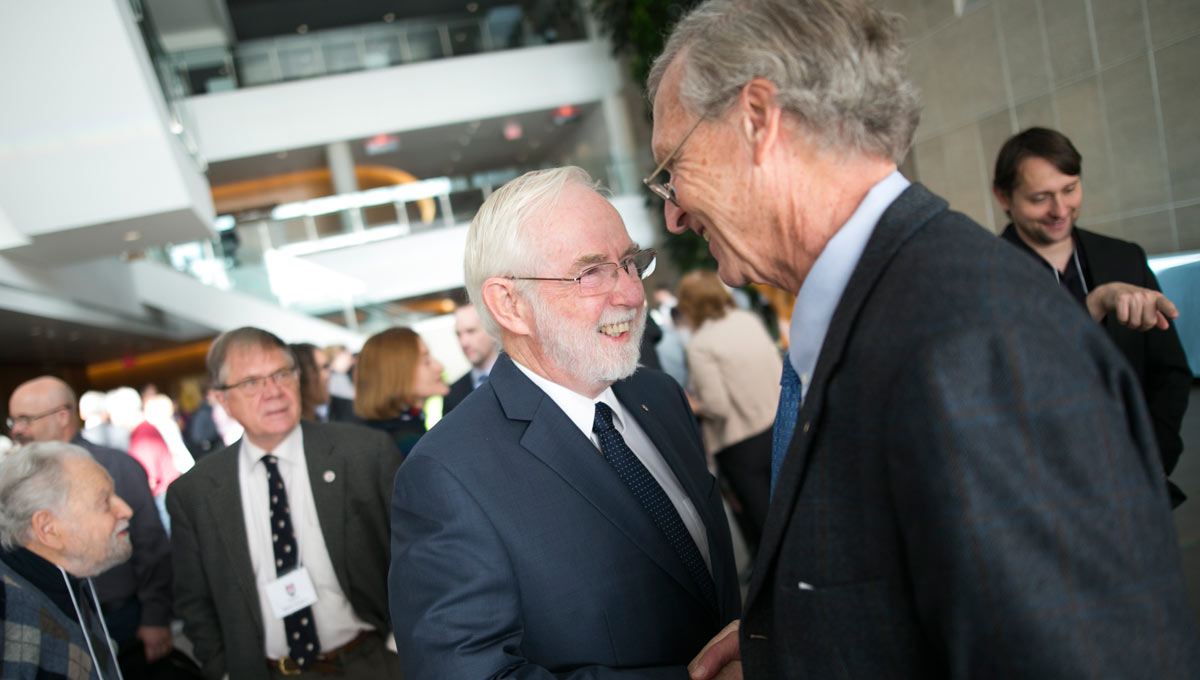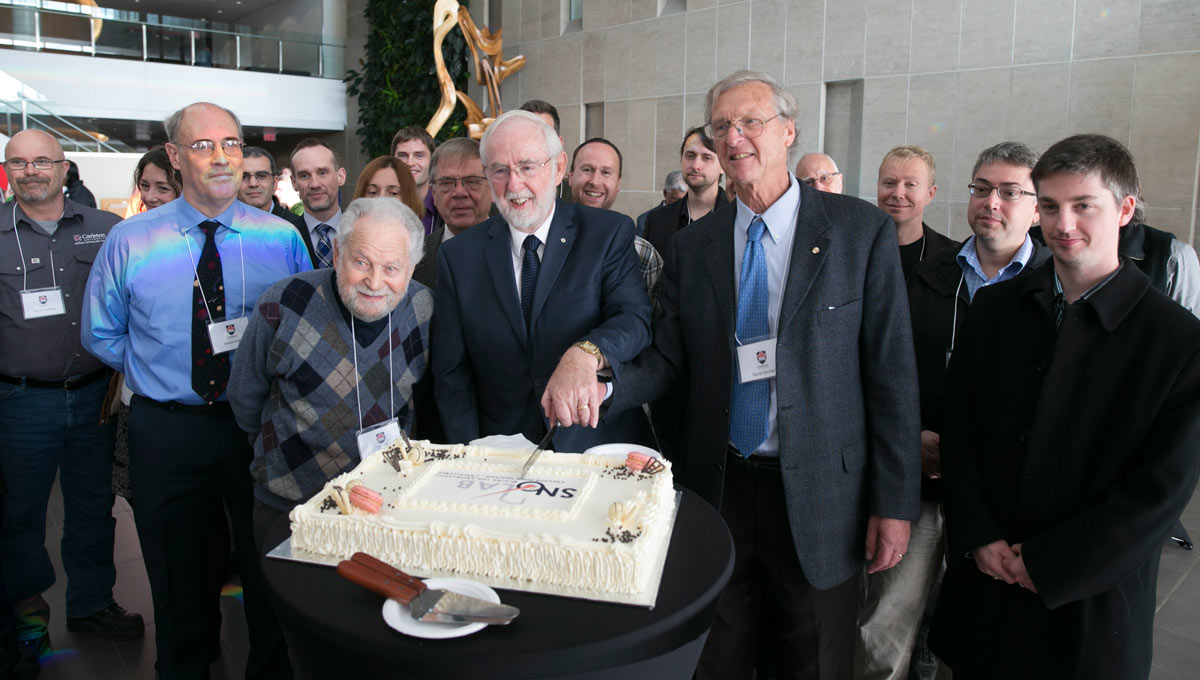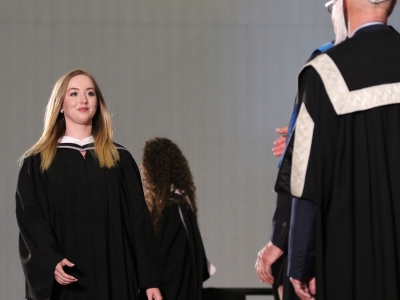By Susan Hickman
It’s another prestigious recognition – following a Nobel Prize – for the important work of physicists in Canada and abroad on understanding the origins of the universe.
The Sudbury Neutrino Observatory (SNO), which includes faculty members from Carleton University, is sharing a $3-million 2016 Breakthrough Prize in Fundamental Physics with four other experimental collaborations around the world investigating the properties of neutrinos.
A total of $21.9 million was awarded at the third annual Breakthrough Prize Awards ceremony in California on Nov. 8, honouring pioneering achievements in life sciences, fundamental physics and mathematics.
“It’s always nice to know that the world is recognizing what you have done is important,” said Carleton’s David Sinclair, SNO associate director (Science).
“The discovery by SNO and the other recognized projects that neutrinos possess mass and change their flavour has had a huge impact on our understanding of physics from the smallest scales of simple particles to the universe itself.”

While scientists have searched for neutrino oscillation since it was first predicted in 1957 by Italian nuclear physicist Bruno Pontecorvo, its discovery and detailed studies emerged in the last decade and have become a huge industry.
Neutrino oscillation has resolved the longstanding solar neutrino problem, which was a major discrepancy between measurements of the numbers of neutrinos flowing through the Earth and theoretical models of the sun’s interior.
The discovery of proof of neutrino oscillation (and thus mass) earned SNO’s Project Director Art McDonald and Japan’s Takaaki Kajita the 2015 Nobel Prize for Physics.
“It’s a very exciting time to be working in the field because we are looking at the fundamental nature of particles,” says Sinclair.”
The Standard Model of particle physics (which classifies all known subatomic particles) doesn’t have neutrinos with mass or oscillating. Now we are looking at where the Standard Model breaks down. We need to introduce new science and we are right at the forefront.”
Sharing in the prize are scientific collaborations at Daya Bay (China), KamLAND (Japan), K2K / T2K (Japan), and Super-Kamiokande (Japan), which are also looking at various aspects of neutrino oscillation. In all, more than 1,300 people are working on the five experiments that received the award.
The SNO project began in 1984 with 16 collaborators and Sinclair joined the team the following year. The scientific authors sharing in the Breakthrough Prize number more than 270 scientists, said McDonald, who attended Sunday’s ceremony.
Sinclair recalls the project’s early days, when he studied the feasibility of an experiment that would require an underground cavity bigger than anything that had ever been excavated before.
Two kilometres underground in Vale’s Creighton Mine near Sudbury and the size of a 10-story building, the SNO is a unique neutrino telescope that uses heavy water to detect neutrinos from the sun and other astrophysical objects, and to measure their properties.
The SNO’s vessel – 12 metres in diameter – contains 1,000 tonnes of ultrapure heavy water. Outside, nearly 10,000 light sensors detect tiny flashes of light emitted as neutrinos are stopped or scattered in the water.

Sinclair, who was responsible for building the systems that would purify the heavy water and the normal water required to perform the experiments, said Carleton’s role in neutrino research has been central from the original proposal onward and its team helped solve a lot of technical problems.
“Much of our time,” he explains, “went into ensuring the quality was there in the design and in the operating procedures.”
When particle physicists Alain Bellerive and Richard Hemmingway joined the project in 2002, Carleton’s focus shifted to analysing data produced by the detector and extracting all the possible physics from it with great precision.
“At about that time, we announced the discovery of neutrino oscillations, and I made the case to build a larger lab to do experiments simultaneously,” says Sinclair.
The resulting SNOLAB, funded by the Canadian Foundation for Innovation and overseen by Carleton, is the world’s second-deepest underground laboratory facility.
Accessed through a mine, SNOLAB is enabling a whole new suite of projects, including Carleton’s “DEAP Experiment” – a search for dark matter headed by experimental physicist Mark Boulay, and the EXO (enriched xenon observatory) particle physics experiment that is looking for possible neutrinoless double beta decay, which is critical to understanding what neutrinos are and why they have mass.
“It is central to understand the true nature of neutrinos,” said Sinclair, who is involved in the research with colleagues Kevin Graham, Razvan Gornea and Thomas Koffas. The EXO experiment is a costly one that requires cornering the market on the production of xenon. “But the measurement also has an importance for cosmology and exploring the mysteries of the Big Bang.”

Without funding, collaborations and a strong belief in the work, the experiments could not go ahead, Sinclair notes.
“Getting recognition certainly opens doors. If we are going to go forward with these very demanding, very expensive experiments, we have to be recognized as being the best. It helps us make the case that what we are doing is important and that we have a good record of delivering the science at the end of the day.”
Mark Zuckerberg, one of the Breakthrough Prize’s founders, believes scientists “can solve the biggest problems of our time . . . by challenging conventional thinking and expanding knowledge over the long term.
“The Breakthrough Prize honors achievements so we can encourage more pioneering research and celebrate scientists as the heroes they truly are,” he said.
Monday, November 23, 2015 in Faculty of Science, Research
Share: Twitter, Facebook



